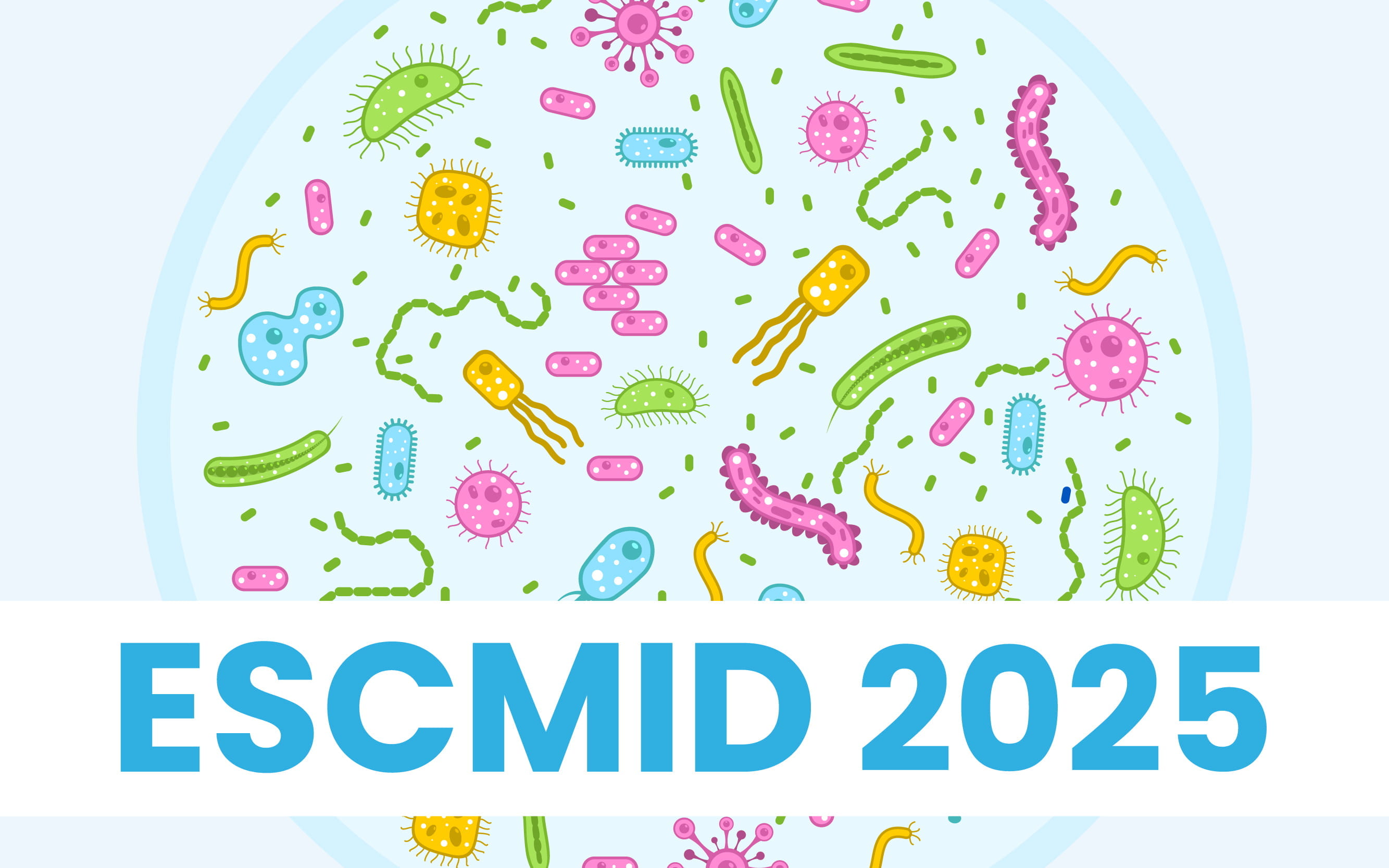ESCMID 2025: Determining New and Revising Old Breakpoints
Antimicrobial Susceptibility Testing of the Combination of Aztreonam and Avibactam in Carbapenem-Resistant Enterobacterales
Speaker: Dr Linda Chan, Hong-Kong
Introduction:
Carbapenem-resistant Enterobacterales have shown to pose a significant global health threat and WHO has listed them as critical pathogens. Metallo-beta-lactamase (MBL) producers such as New Delhi metallo-beta-lactamase (NDM) are suspected of particular concern due to their ability to hydrolyze beta-lactam antibiotics. Though aztreonam is seen to be an exception to this, it can be inactivated by other beta-lactamase that are often co-produced by these organisms.
Main objective:
The combination of aztreonam and avibactam which is a beta-lactamase inhibitor is explored in order to restore activity.
Method:
The study included 39 clinical NDM-producing Enterobacterales isolates that were collected from multiple Hong Kong Hospitals which predominantly included E-coli sourced from urine and rectal swabs. 4 antimicrobial susceptibility testing (AST) methods were used:
-
CLSI Broth Disk Elution (BDE) – reference standard
-
Aztreonam-avibactam disk diffusion
-
Aztreonam-avibactam (Minimum Inhibitory Concentration) MIC strip test
-
Overlapping MIC strip test with aztreonam and ceftazidime-avibactam
Results:
|
Parameter |
Observation |
|
Susceptibility (BDE) |
All 39 isolates were susceptible to aztreonam-avibactam |
|
Categorical Agreement |
100% agreement across the other three methods with no major or very major errors |
|
Essential Agreement (MIC Strip Tests) |
57.5% essential agreement due to variability in MIC values, indicating some inconsistency |
|
Disk Diffusion |
Zone diameter ≥25 mm for all isolates; none fell into the area of technical uncertainty (ATU) |
Conclusion:
The study supported the clinical laboratory adoption of aztreonam-avibactam susceptibility testing, socially disk diffusion, for the detection of active treatment options against MBL-producing CRE. The findings of the study also reinforced the reliability of alternative methods when BDE was not feasible, which led to contribution to more accessible AST practices in antimicrobial stewardship.
The Clinical Significance of Aminoglycoside Susceptibility Breakpoints Modification
Speaker: Dr Oryan Henig, Israel
Introduction:
In 2023 Clinical and Laboratory Standards Institute (CLSI) revised the work of aminoglycoside breakpoints with further reductions proposed by United States Committee on Antimicrobial Susceptibility Testing (USCAST) based on PK/PD analyses and epidemiologic data. These lowered breakpoints reduced the proportion of isolates classified as susceptible, but the clinical relevance of these revisions remain uncertain.
Main objective:
The study assessed the clinical impact of recent updates on aminoglycoside breakpoints mainly focusing on gentamicin and amikacin in the treatment of pyelonephritis due to Enterobacterales.
Method:
-
It was a retrospective cohort study which included more than 4,500 adult patients with Enterobacterales pyelonephritis (based on ICD coding and culture data). The study setting was a single tertiary hospital with 1,500 beds.
-
The patients were divided into two groups: Empiric aminoglycoside and non-aminoglycoside therapy.
-
The primary outcome was 30-day all-cause mortality
-
Susceptibility Testing included VITEK 2, using CLSI breakpoints
-
Time-to-event survival analyses with and without adjustment for susceptibility was done, which was followed by propensity score-adjusted models to control treatment selection bias.
Results:
The following table shows the comparison between Gentamicin and Amikacin on the basis of several parameters:
|
Parameters |
Gentamicin |
Amikacin |
|
CLSI Breakpoint Revision |
Minimum Inhibitory Concentration (MIC) breakpoint changed from ≤4 to ≤2 |
MIC breakpoint changed from ≤16 to ≤4 |
|
Effect of CLSI Revision |
Minor drop in susceptibility classification (from 77% to 76%) |
Decreased susceptible isolates from 94% to 87% |
|
USCAST Proposal |
MIC ≤0.5 — would eliminate susceptibility classification entirely |
MIC ≤2 — would reduce susceptibility classification to 68% |
|
Association with Survival |
Associated with higher survival rates compared to non-aminoglycoside therapy |
No significant difference in mortality under old breakpoints |
|
Effectiveness Based on Susceptibility |
Benefit limited to patients with susceptible strains, particularly MIC ≤1 |
Under revised breakpoints, trend toward worse outcomes for MIC >4 |
|
Impact of Non-Susceptibility |
No mortality benefit in non-susceptible strains |
MIC >4 associated with higher mortality |
|
Outcomes at Revised Breakpoints |
Results consistent under both old and revised CLSI breakpoints |
Patients with MIC ≤4 had outcomes similar to comparators; MIC >4 linked to poorer outcomes |
Clinical Implications:
-
Gentamicin is a clinically valuable empiric agent in urinary tract infections, particularly when MICs are ≤1.
-
The CLSI revisions are clinically justified specially for amikacin where MIC >4 correlates with worse outcomes.
-
Adoption of stringent USCAST breakpoints may be overly conservative which might exclude effective therapy options without clear clinical justification.
Conclusion:
The study reinforced the clinical relevance of revised CLSI aminoglycoside breakpoints, particularly the MIC thresholds that align with patient outcomes. It was concluded that Gentamicin remained effective when used appropriately based on susceptibility, while amikacin’s utility may be diminished in non-susceptible cases. The importance of integrating clinical outcome data with pharmacologic and microbiologic criteria in breakpoint decision-making was highlighted.
ESCMID Global, April 11-15, 2025, Vienna


